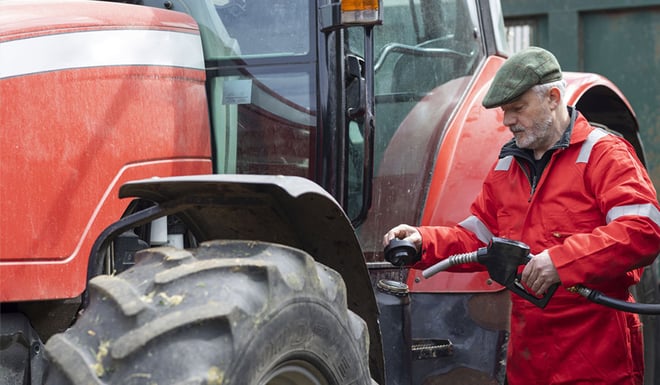Tight control of fuel consumption is at the heart of agricultural concerns, since fuel can represent up to 30% of your annual operating budget.
Many factors influence this consumption; speed naturally, but also the type of land, the weather conditions, the choice of crop growing methods and habits in terms of machine use. But among these elements, the role of the tyre is often underestimated.
In reality, the impact of a badly adjusted slip ratio and excessive rolling resistance is doubly damaging: they increase fuel consumption and reduce the efficiency of agricultural work. A better understanding of the link between tyres and fuel consumption can make substantial savings possible, sometimes representing more than 30%.
In this article we take an in-depth look at the mechanisms and strategies that can help control this decisive relationship better.
1. What is the importance of rolling resistance?
Rolling resistance is often underestimated, yet it plays a decisive role in fuel consumption and work efficiency during agricultural campaigns.
Understanding the importance of this phenomenon and correcting any errors will allow you to optimise your work rate and save money.
What is rolling resistance?
When you operate in a field, the traction required by your tractor to work and manœuver is crucial. It depends essentially on the interaction between your tyres and the surface of the soil.
The tractive effort reflects the force that your tractor has to deploy to pull your implement, but also to overcome the rolling resistance, which occurs as the reaction of the soil faced with the forward movement of the tyre. It’s a question of the quantity of earth which is in front of the tyre when it sinks into the ground and which it has to pass over continually in order to move forward.
Whilst this phenomenon may seem insignificant, it plays a vital role when you work. This resistance affects slip, soil preservation, the lifespan of your equipment, your operational efficiency and, to a significant extent, your fuel consumption.
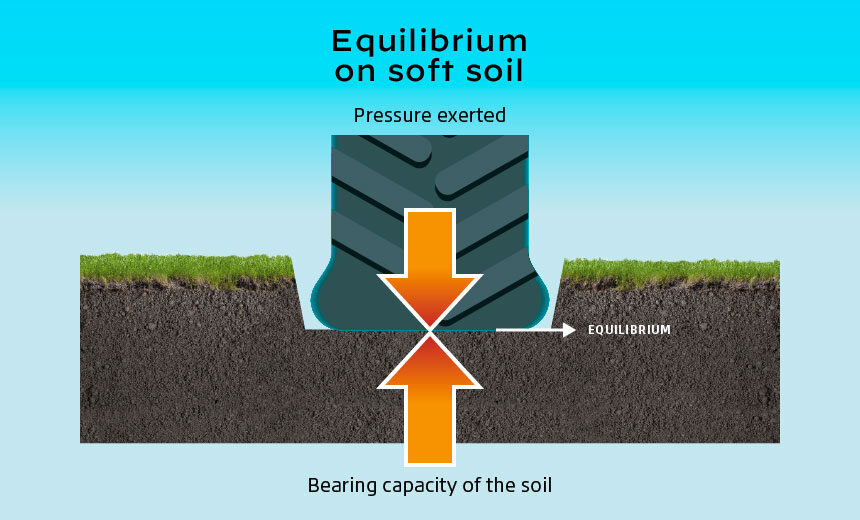
this creates an obstacle to its forward movement
What increases rolling resistance?
The type of soil on which you work is decisive. For example, soft soil into which the tyre sinks will offer very different resistance to a tarmac road which is flat and solid.
Several elements can lead to an increase in rolling resistance, such as:
- Too much load
- A tyre tread that is too rigid or unsuitable
- Incorrect tyre pressure: too low or too high
- Soil that is too soft or wet.
Reducing rolling resistance allows you to make substantial savings in terms of fuel consumption, while promoting more profitable and more environmentally friendly farming.
2. Too much slip prevents me from reducing my fuel consumption
Slip is necessary to a certain extent to allow agricultural tyres to transmit engine power to the ground better and get your combination vehicle moving forwards.
However, too much slip can have a negative impact on fuel consumption and your work rate.
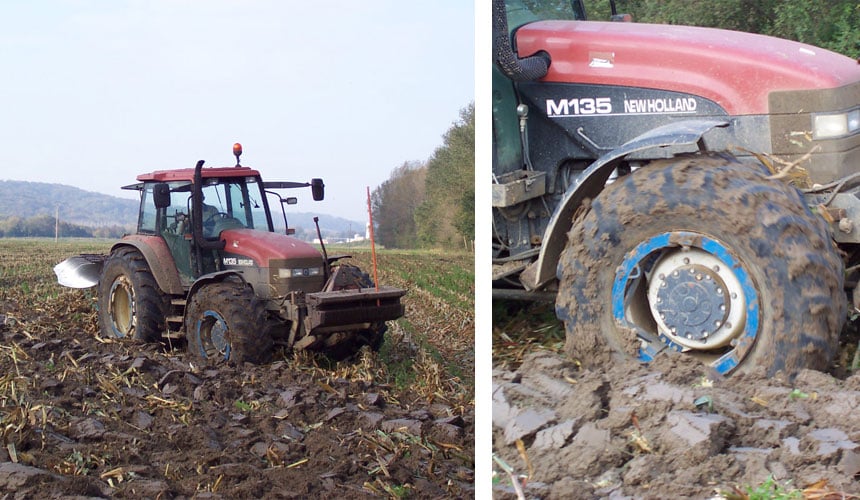
How to establish whether there is too much slip?
Too much slip occurs when the tyres turn at a speed that is greater than the tractor’s travel speed, leading to a loss of energy which results in an increase in fuel consumption.
There are many signs that indicate too much slip, in particular excessive wear to the tyres. When they slip continually, they wear more rapidly, which leads to additional costs linked to frequent tyre replacements.
Unsuitable tyres, such as diagonal structure tyres, incorrect inflation pressure or inappropriate working methods can also lead to more slip.
3. What is the impact of pressure settings on my fuel consumption?
Optimising your consumption and protecting your soil largely depends on your tyres’ pressure settings.
Overinflation in the fields or insufficient pressure on the road can have negative repercussions on fuel consumption and therefore on your finances.

lip on the left with a pressure of 1 bar,
on the right, at 1.25 bar, the tyre slips
What is the impact of overinflation in the fields?
A high inflation pressure may be necessary to compensate for the weight of your implements, however this excess pressure will tend to result in the tyre sinking further into the ground and increasing rolling resistance.
In addition, overinflation limits the size of the tyre footprint and contact patch with the ground, which reduces grip and encourages more slip.
This requires more power from the tractor in order to move forwards, which leads to an increase in fuel consumption and premature wear to the tyres.
Furthermore, overinflated tyres tend to compact the soil. They exert a strong pressure, resulting in compaction which limits the soil’s capacity to absorb water and supply nutrients to the crops. This will have a negative impact on agricultural yields.
To counter this problem, you can reduce your travel speed, which makes it possible to lower the inflation pressure. For this, of course, you need to know the exact weight of the tractor, the implement and any load transfer.
What is the impact of insufficient pressure on the road?
On the other hand, not enough pressure on the road creates greater rolling resistance. It is obviously difficult to spot this because your tractor has the power necessary to drive with underinflated tyres.
But to understand this phenomenon, imagine that you have to push a car by hand on a flat road: If the 4 tyres are correctly inflated, it won’t be a problem, but it will be impossible with 4 flat tyres.
With your tractor tyres it will be the same effort required with underinflated tyres which will lead to significantly more fuel needed as well as premature wear to the tyres.
To establish the correct pressure on the road, you need to know the weight of the tractor, the implement and any load transfer, then refer to the manufacturer’s pressure charts based on the speed of travel and add 0.3 bar to 0.4 bar of additional pressure.
4. What are the options if you wish to reduce your fuel consumption?
Contrary to popular belief, you can significantly reduce fuel consumption with a few simple actions.
Change cropping method
Reconsider your cropping methods and opt for shallower tilling, which will reduce the rolling resistance linked to the traction of the implement and, as a result, your fuel consumption.
This approach requires less energy and protects the organic life within the soil, which is good for your crops.
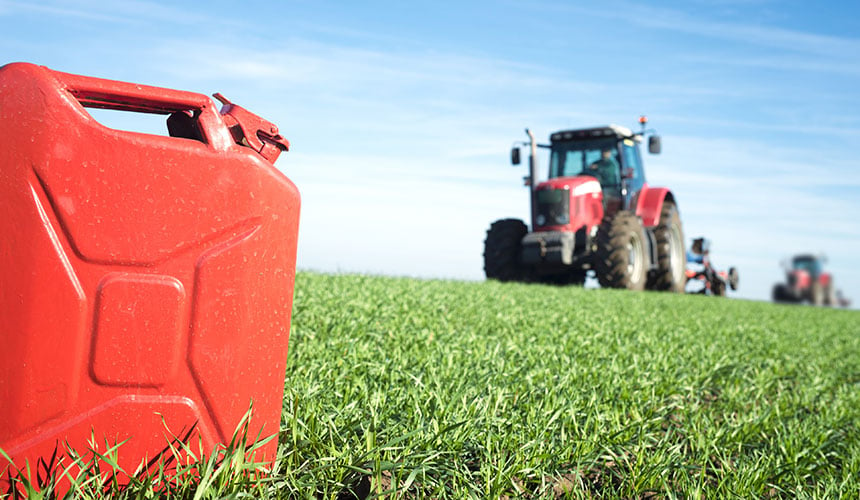
Reduce speed on the road and in the fields
Reducing speed on the road and in the fields will lead to fuel savings. A lower speed requires less engine power, while improving safety.
Finding the right balance between speed and efficiency is therefore important if you wish to save money without having a negative effect on your productivity.
Adapt the inflation pressure in your tyres more frequently
By adapting the inflation pressure in your agricultural tyres frequently depending on the type of ground (field or road) you will reduce rolling resistance and as such your fuel consumption.
This will involve monitoring pressure and adjusting it:
- Reduce pressure in the fields to improve: grip, traction and minimise soil compaction.
- Increase pressure on the road to reduce: rolling resistance and save on fuel.
Investing in a central tyre inflation system may be profitable in the long run and will help you maintain the most suitable pressure for each work area.
This type of device allows you to increase or decrease inflation pressure directly from the tractor cab.
Use Eco-drive better
Power take-off in eco-drive mode in modern tractors allows you to adapt engine power to the needs of the implement.
If your tractor is equipped with this option, use it when the work requires low power, which will allow you to save 15% to 20% on fuel.
Spread the weight more evenly
An overloaded or unevenly balanced tractor may require more energy to carry out the same job. It is therefore essential to spread out the weight as evenly as possible, depending on the weight of your implement.
A suitable weight distribution on the tractor and its tyres can minimise rolling resistance and improve efficiency, thus reducing your fuel consumption.
5. The VX-R TRACTOR tyre was designed to improve energy efficiency
In addition to all the options proposed in the paragraph above, you can choose a tyre that was designed to reduce fuel consumption.
Bridgestone’s VX-R TRACTOR tyre is a major innovation in the field of agricultural tyres. It offers significant advantages in terms of energy efficiency.
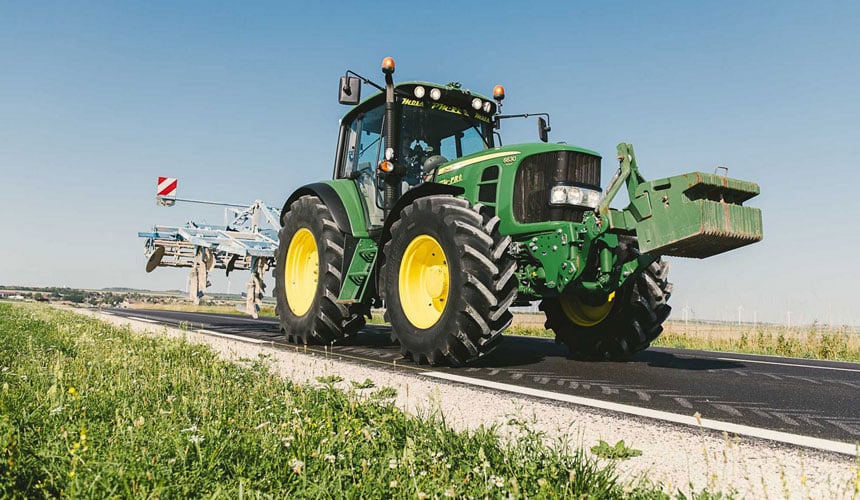
A wider tread for better traction, thus less fuel consumption
Bridgestone’s VX-R TRACTOR tyre is equipped with a wider tread which improves traction and leads to a considerable reduction in rolling resistance. The tractor can move forward with less effort and use up less fuel.
Thanks to its wider soil footprint, the VX-R TRACTOR tyre:
- Optimises the transmission of power to the ground.
- Reduces slip.
- Improves the stability of the agricultural vehicle.
- Limits the risk of excess compaction.
These advantages combine to improve work efficiency, even in wet conditions.
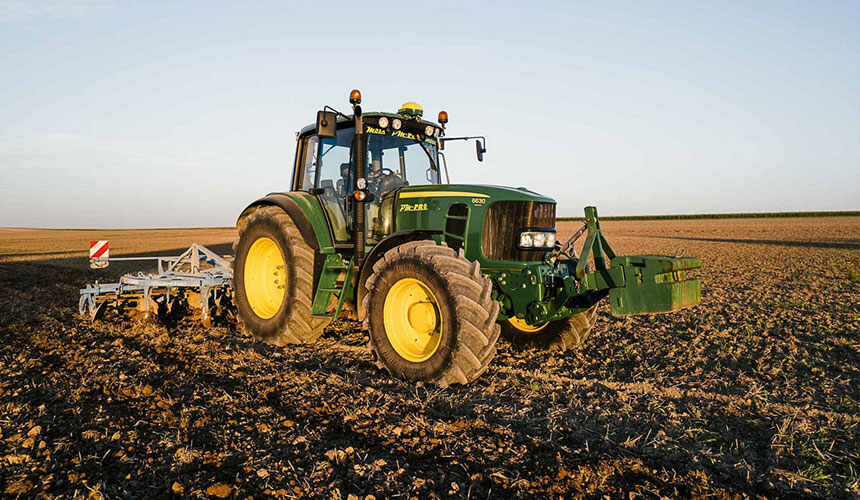
Optimisation of lead to reduce consumption
Lead is the difference in rotation speed between the front and rear tyres of the tractor, when the four wheels are not the same size.
It can have an impact on your fuel consumption. An incorrect lead ratio can cause various problems:
- Uneven wear to the tyres.
- Too much slip.
- Mechanical transmission problems.
- Reduction of the tyre’s wear life.
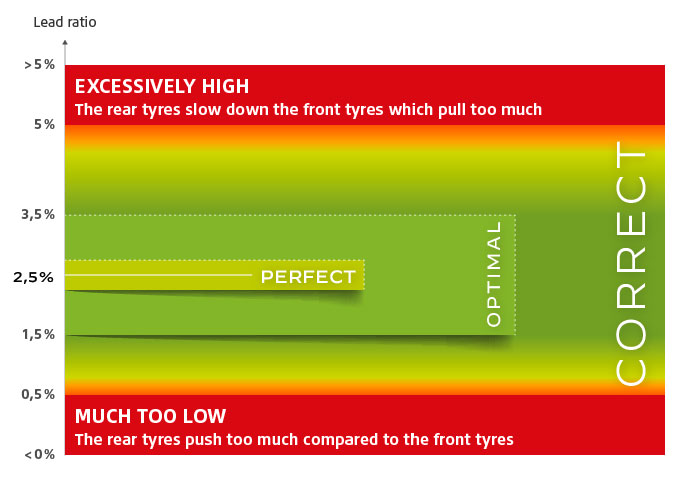
will always be within an optimal lead bracket
The VX-R TRACTOR tyre was designed to work with an ideal lead ratio of 2.5%. Its optimal rolling circumference ensures perfect synchronisation between the front and rear axles of the tractor, which is conducive to perfect grip and excellent traction.
Good lead improves the energy efficiency of your tractor, which in turn reduces your fuel consumption while extending the lifespan of your tyres.
CONCLUSION
Tight management of fuel consumption in the agricultural sector does not depend only on the machines or working methods, but is also strongly influenced by the choice of tyre.
Adequate tyres can really optimise consumption by providing minimal rolling resistance and better traction. This is exactly where Bridgestone’s VX-R TRACTOR tyre makes the difference.
Thanks to its wider tread, it offers better traction, limiting slip and therefore excess fuel consumption.
Its innovative design guarantees ideal lead, thus protecting the tyre against premature wear while maintaining optimal energy efficiency.
Choosing the VX-R TRACTOR therefore means opting for a solution which not only reduces your fuel spending, but also maximises the efficiency and durability of each use of the tractor.
The Bridgestone-agriculture.eu blog is written and administered by tractor tyre experts who are available to provide you with the advice you need on the subject of your agricultural tyres. They allow you to maximise your productivity with information on all subjects linked to tyres: Cheap tractor tyres — Technical data for agricultural tyres — Air pressure advice — Solutions to avoid soil compaction — Sprayer tyre pressure — Why and how to ballast your tractor tyres — When to use dual wheels — The mechanical causes of abnormal wear — Cheap agricultural tyres – etc.
To learn more and boost your farm's profits, Bridgestone-Agriculture is offering you a free, detailed white paper that explains the essential role your agricultural tyres play in your productivity.
Most people who read this article have also read some of the following articles:
- 5 essential techniques to optimise your agricultural tyres
- What is the impact of implement settings on tractor tyres?
- Fleet audit: what is the main benefit of agricultural tyres?
- Do you really use the full capacity of your VF agricultural tyres?
- Agricultural tyres: rules for managing the lead ratio
- Managing the load transfer to the front tyres in polycropping
- What are the signs of an incorrect lead ratio?
- Impact of the dynamic rolling circumference of agricultural tyres
- What is the impact of the section width of your agricultural tyres
- Do my tractor tyres have a wide enough footprint?
This information is intended only to make you aware of the technical and functional aspects of agricultural tires and their use. It does not allow you to make a judgment or a definitive conclusion on a given problem. Only your agricultural tire expert is able to make a technical assessment and take a final decision, case by case.
Leave a
commentary
Your email address will not be published.
Required fields are indicated with *


